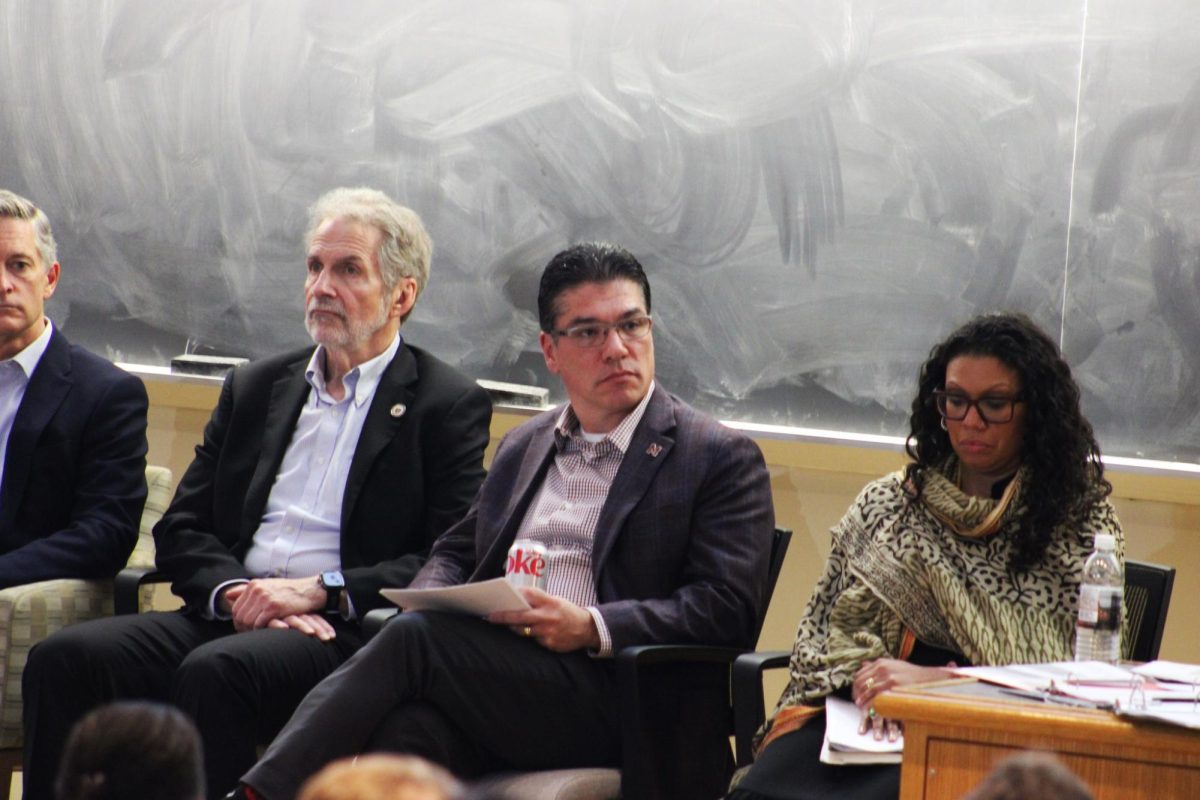Julie Deffenbaugh managed Wal-Mart’s jewelry department in the
Arlington, Texas store from 1990 to 1994. In 1992, she began a relationship with a fellow employee named Truce Williams, which culminated in their marriage two years later. Several supervisors knew of their relationship, and she was called to a meeting in 1993, in which one of them declared that
Deffenbaugh, “would never move up with the company being associated with a black man and that Wal-Mart frowned upon fraternization with[in] the company,” according to Williams v. Wal-Mart Stores (1998). Early in 1994 she was fired, on trumped-up charges of
“shopping on the clock.” Abuse of workers is common at the company that employs over 1 million Americans: Wal-Mart.
Wal-Mart is the world’s largest and most powerful retailer. Its revenue in 2003, over $256 billion, is only slightly less than the value of all the goods produced in Colombia ($263 billion), according to the New York Times. It has grown to be that size through a variety of measures, from greater use of technology to an extremely aggressive business strategy, but the essential thrust is to single-mindedly reduce costs. The result of this ruthless corporate mentality is wholesale exploitation of the company’s workers.
While the retail industry in general is one of the poorest paying professions, Wal-Mart is particularly parsimonious, giving most of its “associates” only $7.50 to $8.50 per hour, often less than $1,000 a month.
In addition to low wages, workers are often required to work off the clock without pay, during breaks or as overtime. To give one example, 596 pharmacists suing for damages claimed their work weeks were 60 hours rather than the 40 that Wal-Mart recorded, and that they were not compensated for this overtime.
Part of the reason workers are exploited like this is that there is essentially no union presence at Wal-Mart. The company aggressively prevents union formation, with the government issuing more than 60 complaints at the National Labor Relations Board, encompassing everything from illegal firings of unionizing workers to threats and surveillance of them. Without unions to advocate for and defend them, Wal-Mart employees are disadvantaged in everything from wages and job security to healthcare.
Between 41 percent and 46 percent of Wal-Mart’s employees are covered by the company’s health care program, which has a 6 month waiting period for full-time workers and a two-year period for part-time ones. By contrast, other large firms offered insurance to 66 percent of workers, at an average waiting period of 1.3 months. Furthermore, the plan itself requires employees to pay 42 percent of the costs of their healthcare, versus 16 percent for large-firm workers and nothing for many unionized grocery employees. Many employees simply cannot afford Wal-Mart’s healthcare.
Because of abysmal wages and healthcare, workers are often forced to seek assistance from the government. A report entitled “Everyday Low
Wages” by the staff of several Democratic congressmen estimated that a single Wal-Mart employing 200 people would cost the government around
$420,750: over $2,100 per employee. These costs would result from having to provide free lunches for children, housing assistance, healthcare and tax credits.
In addition to general worker exploitation, women, who make up 65 percent of hourly employees, are discriminated against, receiving 37 cents less than men in comparable positions. Women have a great deal of difficulty entering management, with an average of 4.38 years to gain a job as Assistant Manager, while men average only 2.86 years. 90 percent of store managers are men, and overall, women make up only a third of all managers. Among Wal-Mart’s competitors, women compose over 56 percent of managers.
Even entrance into management does not secure equal treatment, as women management trainees make nearly a thousand dollars less than male counterparts. This inequality persists at the highest levels, with the four female senior vice presidents receiving an average of nearly $280,000, while men in the same position got salaries of almost $420,000.
As a result of widespread discrimination, a massive class-action lawsuit is underway, representing hundreds of thousands of current and former Wal-Mart female employees. Unsurprisingly, Wal-Mart is among the most-sued organizations in the country: in 2001 it was sued 4,851 times, second only to the US government at over 7,500.
Exploitation of workers is hardly new to the world, and Wal-Mart may not be the worst corporate offender, but it is at the present time the largest and most prevalent. Consumers have power and they should exercise it. If you support Wal-Mart’s vision of America – a land of low-paying, nonunion, exploitative jobs – then by all means shop there. But if you believe that Americans deserve jobs they can be proud of, shop elsewhere.
Andrew Freeman is a Collegian columnist.






